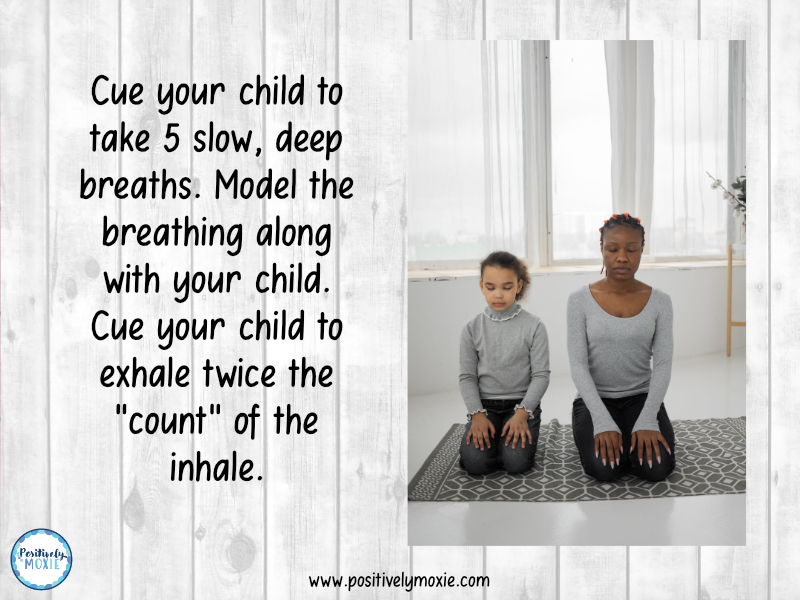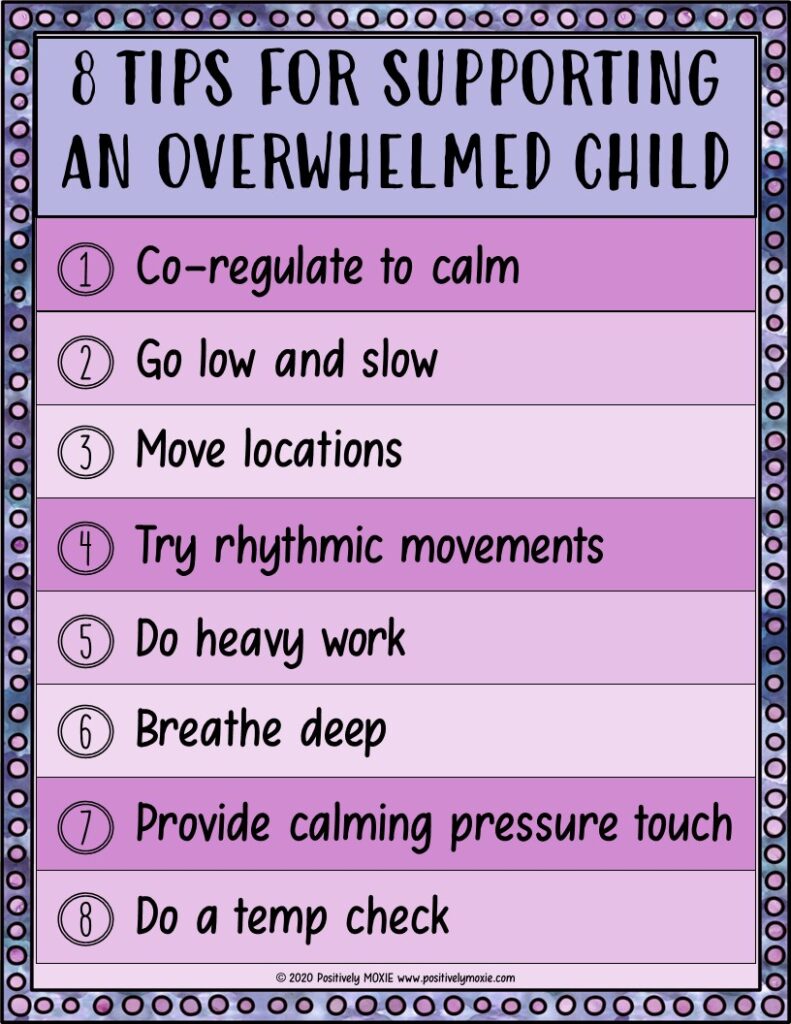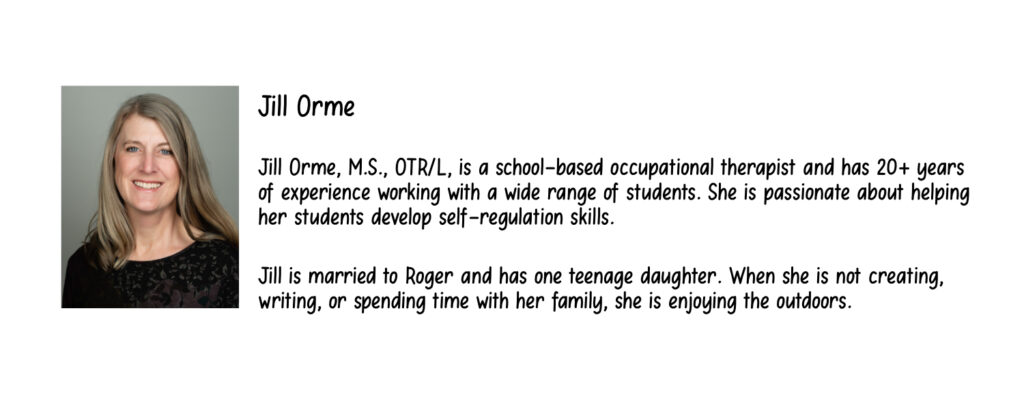
Parenting elementary school-aged children can be both rewarding and challenging. As your child navigates the ups and downs of growing up, they may experience overwhelmed moments, leading to anger, frustration, and exhaustion. As a parent, it’s crucial to understand and support your child during these times. This guide will explore practical strategies and tips for supporting an overwhelmed child.
When we think of supporting an overwhelmed child, we must consider what might be happening underneath, or as Daniel Siegel and Tina Bryson term the “downstairs” brain (The Whole Brained Child, 2011). We can learn tips for supporting children and helping them manage their behaviors.
When our nervous system becomes overwhelmed, it taps into an area of the brain associated with the emotion center or the limbic system. It tends to be a reflexive response that sends us into our safety response and surfaces automatically.
The fight-flight-freeze response removes our “thinking” brain. It makes it difficult for us to hear words because the neural pathways from the prefrontal cortex back to the amygdala (limbic area) are not well developed – words and messages are not heard or difficult to understand. We must address the child’s physiological, emotional, and sensory needs. Overwhelming and other challenging behaviors often drop when we can address these foundational issues and calm the stress response.
A child’s behavior is incredibly complex. The purpose of this checklist is to provide a simple but relevant list to help your child get back to calm.
1) CO-REGULATE CALM
First, when a child is overwhelmed, we must “put our oxygen masks on first,” as it is often said. As adults, we must (try…) to be the calm the child needs to see. First, stop and take a deep breath with a longer exhale. Next, recite an affirmation that you can say quietly to yourself. Create and practice ahead of time a short phrase such as “This will be okay,” “This will pass,” or “I can handle this,” for example. Lastly, relax your body by working to lower your shoulders, unclench your hands, and soften your face.
2) GO LOW AND SLOW
Next, move your body smaller by kneeling or sitting at your child’s level. Lower your voice pitch and volume. Repeat a phrase that is comforting to the child, such as “You are safe,” “It will be okay,” or “I am here.” This offers soothing repetition to the child. Help your child by co-regulating your movement, voice volume, and breath. This is key to beginning the de-escalation cycle.
3) MOVE LOCATIONS
Move to a quieter and less visually stimulating part of the room or area. Allow the child to retreat to a calming corner or break area. This technique allows the child’s brain to reset itself. Physically moving readjusts the nervous system and allows the child’s brain to refocus.
4) TRY RHYTHMIC MOVEMENTS
In addition to moving locations, try to provide an opportunity to rock or swing rhythmically. This could be in a rocking chair or with bigger movements like a swing. Linear, rhythmic rocking taps into the body’s vestibular system and has a calming and organizing effect on the body.
5) DO HEAVY WORK
Perform activities that involve pushing, pulling, lifting, and carrying heavy items. This “heavy work” incorporates the body’s proprioceptive system. The receptors for this body awareness sensory system are found in the muscles, tendons, and joints. This helps to calm the nervous system.
6) BREATHE DEEP

Cue your child to take 5 slow, deep breaths. Model the breathing along with your child. Cue your child to exhale twice the “count” of the inhale. Breathing taps into the body’s parasympathetic nervous system or the “rest and digest” functioning to relax the body.
7) PROVIDE CALMING PRESSURE TOUCH
Use deep pressure touch with the child. This could look like firm, gentle squeezes to hands and arms or pressing firmly down on the child’s shoulders. Deep pressure is typically more tolerable than a light touch.
8) DO A TEMP CHECK

Check to make sure the child is not too hot or cold. Temperature can be quite subjective for children. Help to remove a jacket or put on a sweatshirt. An overheated child affects the ability to regulate.
To clarify, our sensory systems inform the body and brain. These sensory experiences are coded with emotion and connected to memories. This may help to explain why children are often triggered into a fight-flight-freeze response by sensations and feelings. By remembering to monitor the child’s physiological, emotional, and sensory needs first, we can help offset and ultimately reduce these challenging behaviors and calm the stress response.
Navigating your elementary school-aged child’s big emotions requires patience, understanding, and a commitment to fostering emotional well-being. By staying calm, actively listening, and teaching your child valuable coping skills, you can create a supportive environment that helps them navigate the challenges of growing up. Remember, you’re not alone in this journey, and with the right tools, you can guide your child toward emotional resilience and a healthy, balanced life.
Are you looking for more? Please check out our self-regulation toolkits!
This resource contains over 100 pages of worksheets, posters, and activities designed for learning self-regulation. Self-regulation helps teach students emotional control and emotional regulation skills. This BUNDLE includes worksheets, quizzes, posters, emotions cards, tools posters, a file folder for student reference, and a flip book for teaching self-regulation skills.


